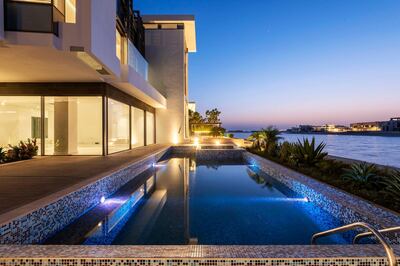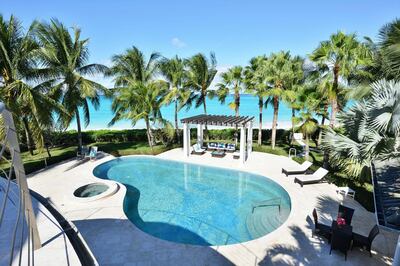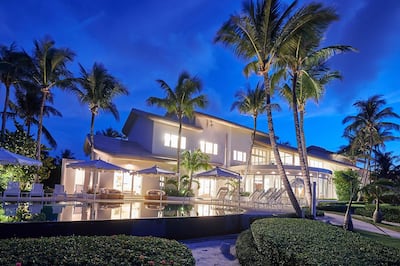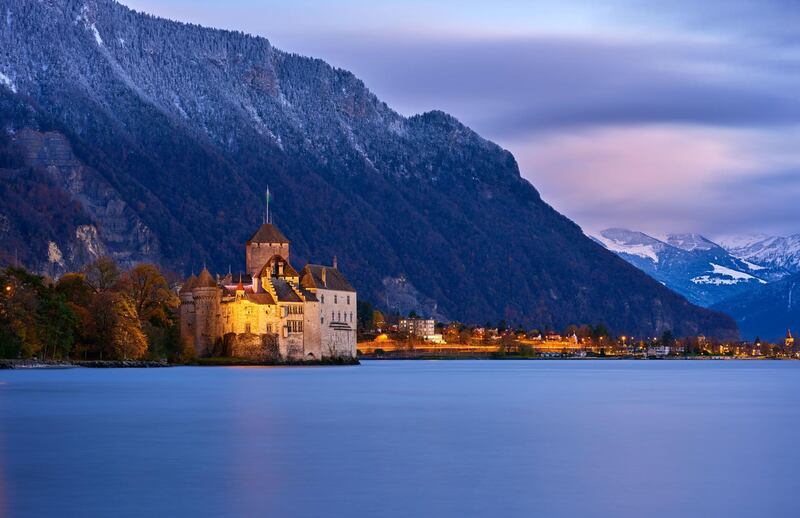Water has shaped patterns of human settlement since the dawn of civilisation. For our earliest ancestors, access to water meant sustenance, the ability to develop irrigation systems and settle in one place, and opportunities for navigation and trade, not just of products but also ideas, languages and customs. From the valleys of the Tigris and Euphrates, to the banks of the Nile, Tiber and Yellow River, the world's greatest civilisations were able to flourish because of their proximity to water.
And our desire to settle near water has not waned since then, it seems. A recent report from property consultant Knight Frank has revealed that waterfront addresses are the most coveted in the world, and that prices for prime waterfront estates are, on average, 40 per cent higher than comparable properties inland. The Knight Frank Global Waterfront Monitor found that waterfront homes in cities such as Sydney, Hong Kong, Paris, London and Dubai are particularly attractive.
In Dubai, you can expect to pay up to 50 per cent more for a water view – a figure only surpassed in the Knight Frank study by Sydney, where the uplift is 89.3 per cent, the Gold Coast, where you would pay a premium of up to 64.1 per cent, and Perth, where a sea view would set you back up to 53.2 per cent.
The Palm reigns supreme
When it comes to waterfront addresses in Dubai, The Palm still reigns supreme. "Palm Jumeirah, overlooking the Arabian Gulf, is Dubai's most desirable waterfront location. The scarcity of the product, along with the fact that waterfront properties are usually best-in-class in terms of specification and amenities, has insulated values over the last decade," says Taimur Khan, Knight Frank's research manager in Dubai.

James Hatton, senior global property consultant of Gulf Sotheby’s International Realty, concurs, but points to a couple of newcomers that might start giving The Palm a run for its money. “Palm Jumeirah is the most in demand, with the likes of Port De La Mer and Jumeirah Bay Island starting to attract a bit of that interest,” he says.
A villa on Palm Jumeirah currently being listed by Sotheby's for Dh39.9 million highlights the appeal of Dubai's much-coveted man-made island. The three-floor, 12,330-square-foot property is located in the Viceroy Beach Villas, and features four double bedrooms, marble-clad en-suite bathrooms, walk-in wardrobes, and a dedicated entertainment room that leads onto a roof terrace kitted out with a Jacuzzi. This is one of only six villas located on the grounds of the luxury hotel property.
When it comes to waterfront real estate in Europe, Paris, London, Berlin, Lake Geneva and Monaco are among the most attractive spots, while in Asia, Hong Kong and Singapore are the destinations that command the highest premiums for this category. A view of Hong Kong’s bustling waterways comes with an uplift of up to 39.9 per cent.
Harbour or sea?
Perhaps unexpectedly, harbour views are more appealing than sea views, the Knight Frank report reveals. Analysis also shows that there is some correlation between the volume of water and the premium generated. Where water is in abundance – in island destinations such as Hong Kong and Singapore, for example – the premium is smaller. In the German capital, meanwhile, the current uplift of 28 per cent is set to increase as availability of land along the River Spree lessens.
Till BrühöfenerMcCourt, head of research at Ziegert Immobilien, Knight Frank’s partner in Germany says: “With fewer new-build opportunities available and a finite number of properties, values are rising, particularly those in the city centre close to Charlottenburg, Mitte-Mitte and Friedrichshain.”
Concerns about global warming and rising sea levels are not yet proving to be a deterrent when it comes to purchasing waterfront properties, confirms Lana Rademaker, chief sales officer and managing broker at Damianos Sotheby’s International Realty in the Bahamas. “It’s not a common concern for most buyers we deal with. It’s not that it’s not on their radar or perhaps in their mind, but it’s not something that is an obstacle to purchasing.”

It is easy to see why, when faced with the prospect of living somewhere like 14 Ocean Drive in Nassau. The beachfront property belonging to country music star Shania Twain is currently on the market for a guide price of $10.95 million (Dh40.22m), and is set on a 7,000-square-foot beachfront plot in the Old Fort Bay gated community. Its five bedrooms all offer expansive sea views, while a large media room is on hand should you ever tire of the vistas.
The appeal of waterfront living is manifold, experts suggest. A property by an ocean, river, lake or creek affords a certain lifestyle and amenities – from a place to moor your private yacht, to jetties, quays and access to various watersports facilities. It also offers an ever-changing panorama.
Cultural connotations
Demand for waterfront properties around the world is led by buyers from the United Kingdom, the United States of America, Canada, Germany, France, Switzerland, Australia and, in eighth place, the UAE. Proximity to water can also be a key driver for Chinese buyers, because of positive feng shui connotations.
"The word feng shui literally means wind and water," explains Shivani Adalja, a feng shui practitioner from Dubai. "Feng shui is the Chinese science of energy management that is based on the interaction of the five elements: water, wood, fire, earth and metal. The water element is particularly important as it represents prosperity and movement. Water also depicts wealth and growth.
“Waterfront properties are sought after as they are considered to be lucky and likely to have good feng shui. More and more Chinese and Indian buyers contact me on regular basis to check feng shui for waterfront properties. These properties have an active pool of energy due to their proximity to water. Having said that, not all waterfront properties are feng shui friendly but, overall, Asians tend to prefer to buy or rent homes by the water to be able to tap into that energy,” Adalja adds.

Even for those who don't subscribe to the principles of feng shui, there is a growing body of scientific evidence that suggests that living near water has positive psychological and physiological effects. This is not a new idea, of course – doctors were prescribing trips to the seashore as early as the 18th century, and most of Albert Einstein's greatest theories were developed while he was sailing out at sea.
The power of water
But more and more attention is being paid to the role that water can play in uplifting our communities – BlueHealth, a pan-European research initiative investigating the links between environment, climate and health, has been set up to specifically explore how water-based environments in towns and cities can affect health and well-being. It brings together experts from nine institutions and is funded by the European Union’s Horizon 2020 programme.
Water is believed to reduce stress levels, and is considered an antidote to "red mind" – a state of anxiety caused by overstimulation, increased urbanisation and a growing reliance on technology. The antithesis, Blue Mind, a sense of water-induced calm, is analysed by scientist and author Wallace J Nichols in his book of the same name, published in 2014. Nichols describes Blue Mind as "a mildly meditative state characterised by calm, peacefulness, unity and a sense of general happiness and satisfaction with life in the moment".
In his book, Nichols highlights a 2010 research study at the University of Plymouth, where a group of adults were asked to rate more than a hundred pictures of different urban and natural environments. Respondents gave higher ratings for positive mood, preference and perceived restorativeness to any picture containing water, whether it was in a natural landscape or an urban setting.
“We are inspired by water – hearing it, smelling in the air, playing in it, walking next to it, painting it, surfing, swimming or fishing in it, writing about it, photographing it, and creating lasting memories along its edge,” Nichols writes.
And if you can admire it from a hot tub on the terrace of your private residence overlooking the Indian Ocean, all the better.








